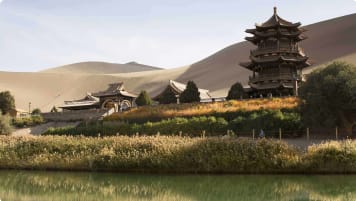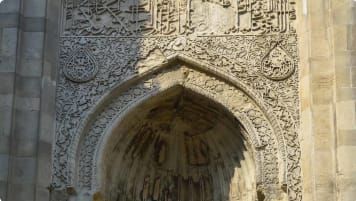Highlights of Bhutan: Bhutanese Temples
Modern day Bhutan has a deep affinity with its Buddhist past. Buddhism is the source of religious and cultural identity for the majority of Bhutanese people. The history of Bhutan goes some way to explaining why, in the upper ranges of the Himalayas, nationalism intertwined so tightly with religion.
1 Jan 20 · 5 mins read
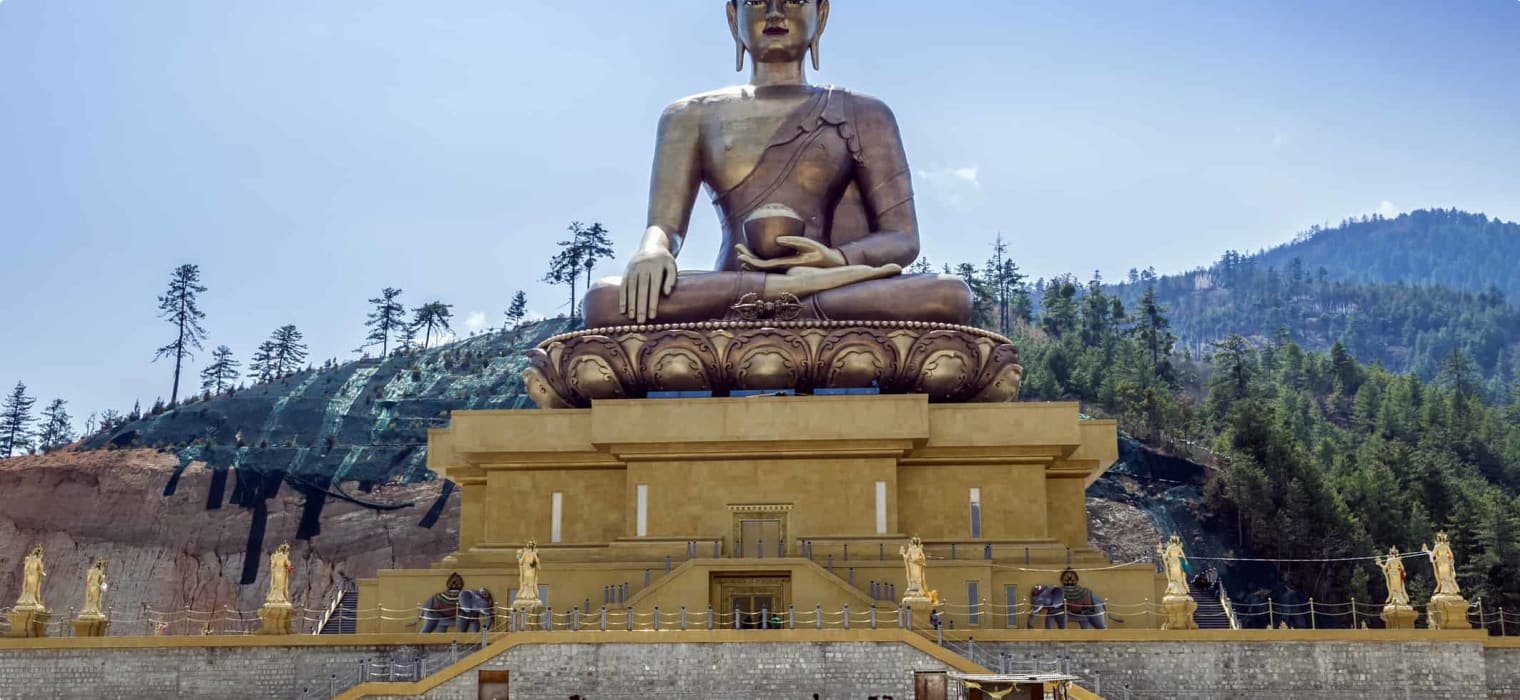
Temples in Bhutan
Bhutan has a deep affinity with its Buddhist past. Ringed by the great Himalayan mountains and isolated for much of its history, Bhutan exists today as a gateway to ancient Buddhist societies. The country resisted phones, roads and railways until the 1960s, and still refuses to install traffic lights in its capital city, Thimphu. Around three quarters of Bhutan’s population is Buddhist, the majority of which follow Vajrayana Buddhism, the state religion. It is impossible to walk through the country and not sense the spirituality that permeates into every element of daily life.
Buddhism is the source of religious and cultural identity for the majority of Bhutanese people. The history of Bhutan goes some way to explaining why, in the upper ranges of the Himalayas, nationalism intertwined so tightly with religion. Buddhism arrived in Bhutan from the Tibetan plateau in the 8th century AD. The religion was championed by Guru Rimpoche, who, according to legend, arrived in the Himalayan valleys on the back of a tigress. Guru Rimpoche fought away the local demons, and constructed the first Buddhist monasteries along the Paro Valley floor. It was in these early monasteries and temples that the first written history of Bhutan was recorded.
Into the 12th century, two Buddhist sects emerged as the main political forces in the country. By the 17th century, the sectarian division was resolved when the country was united underneath the political and religious authority of the Mahayana Buddhist sect. The Mahayana leader was Ngawang Namgyal, who proceeded to build a constellation of Dzongs – fortress monasteries – to maintain peace through Bhutan’s valleys and mountain ranges. Bhutan continued to be troubled by the threat of foreign powers, particularly Britain from the late-18th century onward, and internal strife. Throughout these times, a dual system of power was retained, in which both a spiritual and political leader directed the country. Though this system collapse with the formation of the Bhutanese monarchy in 1907, the Je Khenpo – spiritual leader – still has considerable influence over the King of Bhutan.
Throughout the country’s history, Buddhism has provided the moral, institutional and militaristic framework for Bhutanese society. Bhutan can not be separated from its Buddhist roots, which explains the remarkable range and number of temples that can be visited in the country. There are hundreds of monasteries and temples in Bhutan, extending out from the crowded streets of Thimphu to the rice paddies in the lower Himalayas. Read on for our top three Bhutanese monasteries.
1. The Chimi Lhakang Monastery
The Chimi Lhakang Monastery, translated as ‘The Fertility Temple’, is a Buddhist monastery in the Bhutanese Punakha District. It has become one of Bhutan’s foremost cultural icons, albeit for its rather quirky nature. The Fertility Temple was founded by Saint Drukpa Kunley, a monk who travelled through Bhutan in the 15th century, who has become known as the “Divine Madman”. Kunley is seen as one of the most important figures in the transfer of Buddhism from Tibet to Bhutanese culture. The story of the Divine Madman is one of the most interesting, bizarre and surprising features of Bhutan’s Buddhist heritage. He gained popularity through his simplification of Buddhist texts for the masses, although he used very unusual methods. Perhaps the most strange was his adoption of the phallus as a sacred symbol for enlightenment.
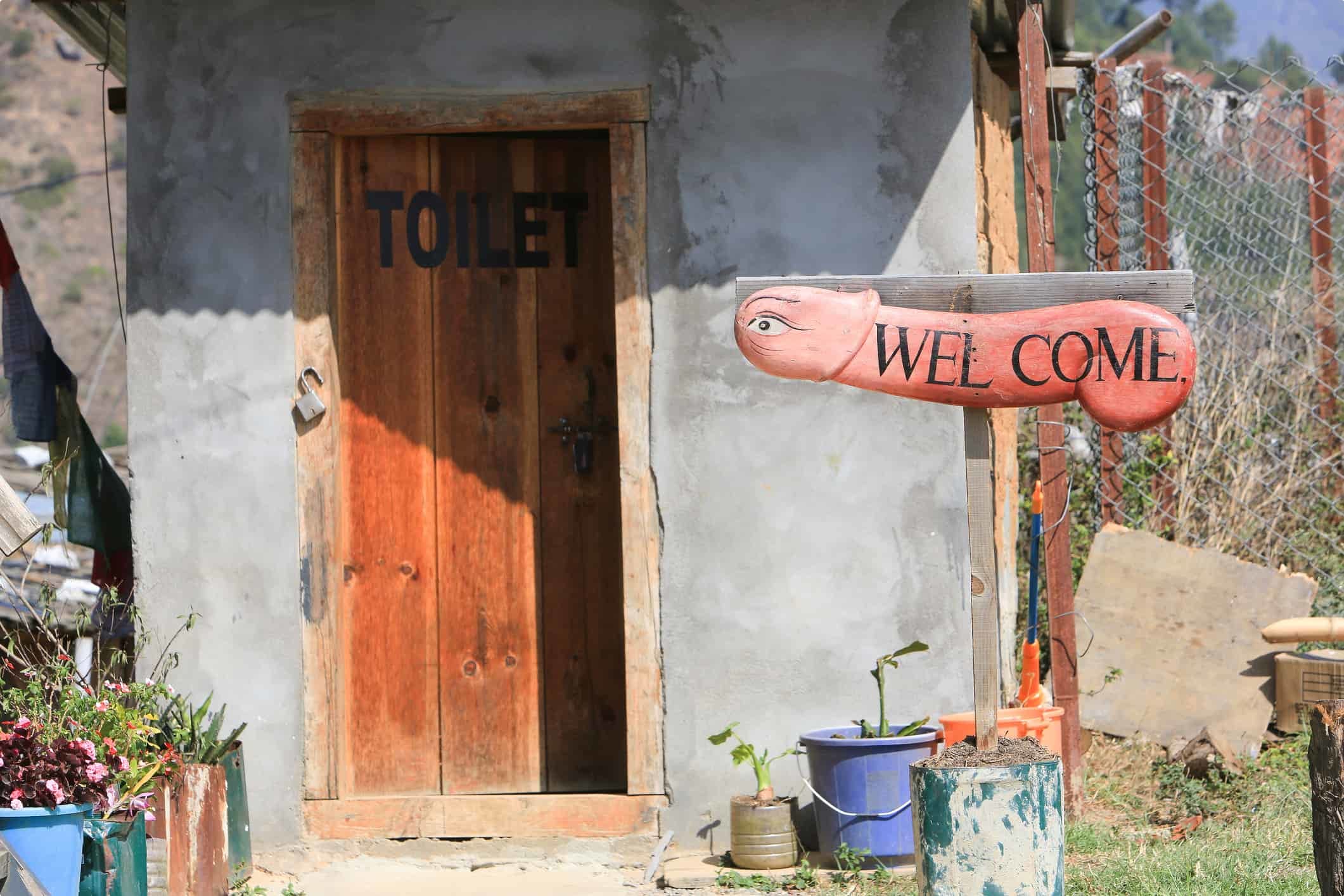
The Divine Madman’s message lives on in the Fertility Temple. Thousands of Buddhists take pilgrimage every year to visit the Fertility Temple, hoping to receive blessings, prayers and a greater chance of conceiving a baby. The temple’s monks are the guardians of a wooden phallus symbol, handled in silver, which is used to bless visitors. The wooden phallus is believed to be the original symbol passed down from the “Divine Madman”. Wooden phalluses can found all around the Fertility Temple, from the roofs to the balconies to the garden areas. Tourists can even buy large wooden versions themselves.
2. The Dechen Phodrang Temple
The capital of Bhutan, Thimphu, is home to many beautiful temples. Dechen Phodrang, translated as ‘Palace of Great Happiness’, is one of the most famous, located in the north of Thimphu. First built around the 12th century, Dechen Phodrang is now home to a monastic school, with around 450 students a year.
Dechen Phodrang was the first temple in Thimphu, and is home to UNESCO preserved wall paintings from the 12th century. Later, the temple served as a Dzong, or fortified temple, to maintain peace and order in Thimphu.
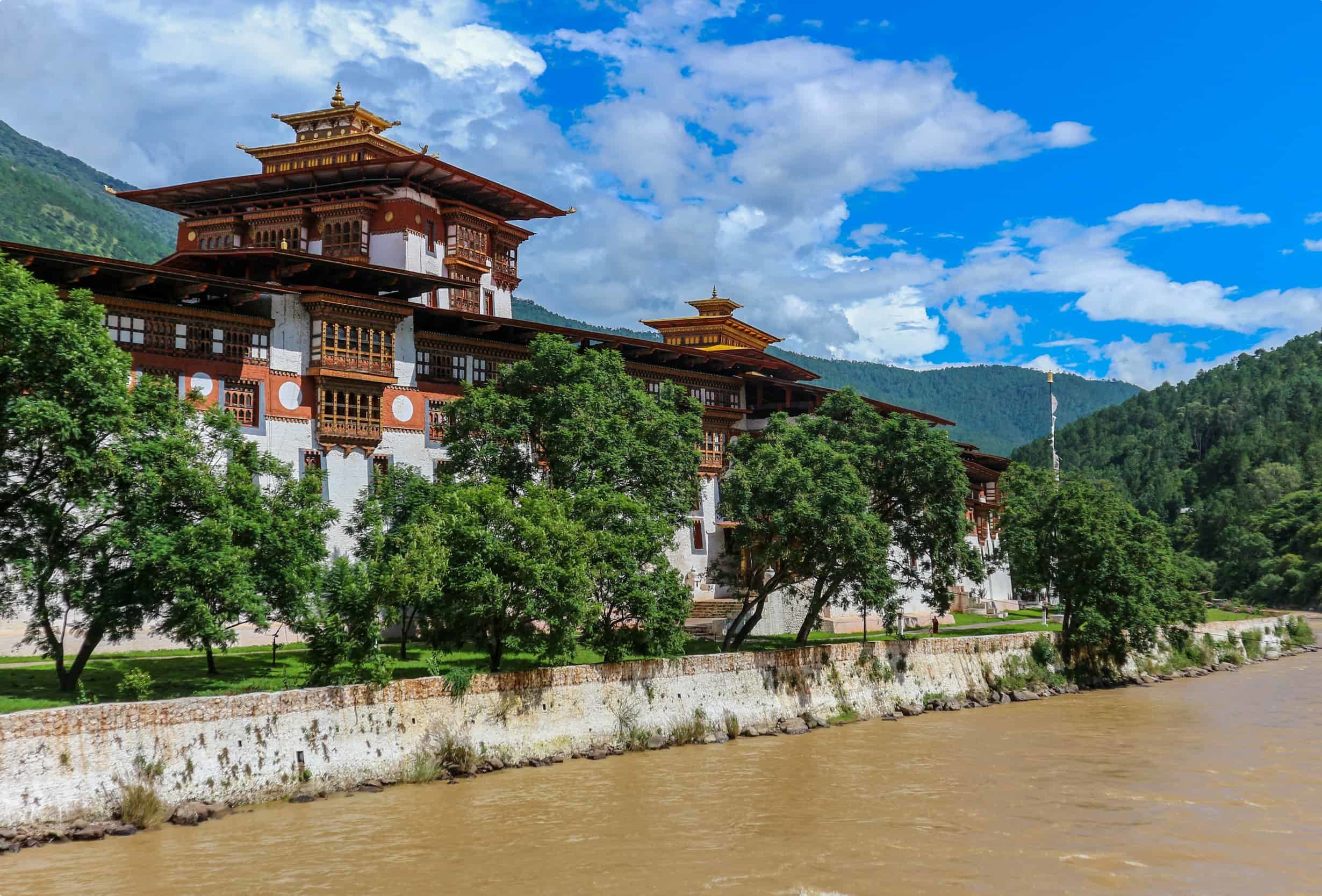
3. The Tiger’s Nest Monastery
The Tiger’s Nest monastery, known locally as Paro Taktsang, has earned a reputation as one of the most beautiful tourist spots in central Asia. Located above the Paro Valley, the Paro Taktsand has become the most iconic Bhutanese tourist attraction, and a trip to the country is incomplete without a visit.

The Tiger’s Nest Monastery is a Buddhist construction that was built at the end of the 17th century, in the traditional architectural style of the time. The Paro Takstang complex is situated at the top of a mountainous outcrop, its structures seemingly sprouting out from the angular rock face beneath it. The monastery lies near the system of caves where Guru Rimpoche meditated for several days in his bid to clear the demons from Bhutan. The white walls cling on to the edge of a cliff face, the other side of which lies a steep drop of almost a kilometre to the valley floor below. In all, Paro Taktsang sits at more than three kilometres above sea level. Despite its isolated location, Paro Taktsang is still lined with luxury items, from Buddha statues to stone tigresses. You can read our article on the Paro Takstang monastery if you would like to find out more about this truly remarkable site.
On a final note, as beautiful and mystical as these temples are, there is a second side to the Bhutanese experience that should be afforded just as much attention. The Buddhist monks who live, eat and pray in the many temples throughout the country are the true vehicles of Bhutanese culture. Make time to talk to them, and you might be surprised at what you learn.
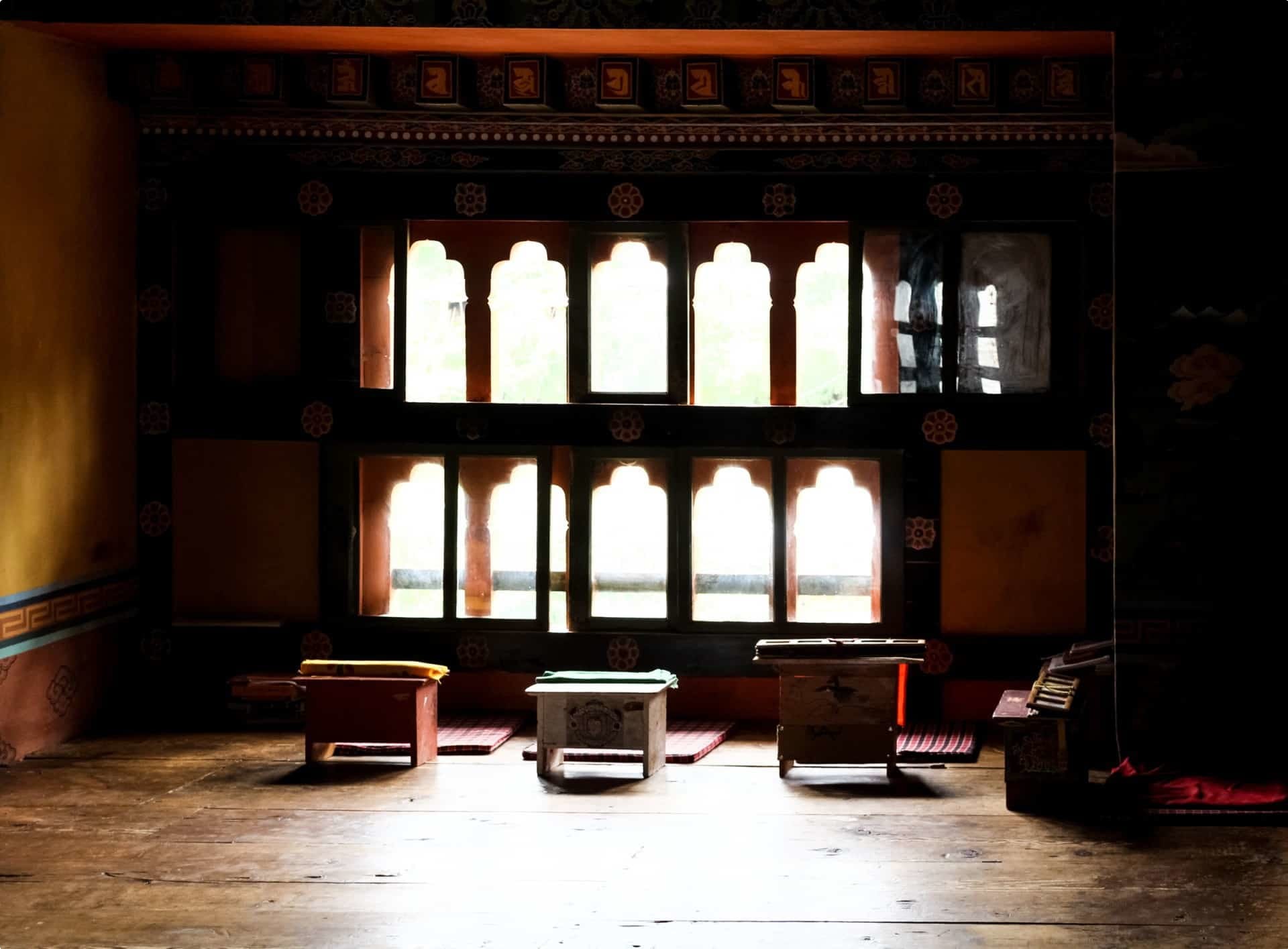
Articles about Bhutan published by Odyssey Traveller:
- Bhutan: A journey into the Hidden Kingdom.
- Festivals of Bhutan.
- Bhutan’s Nalakhar Tschechu Festival
- The National Textile Museum of Bhutan
- Tiger’s Nest Monastery, Bhutan
For all the articles Odyssey Traveller has published for mature aged and senior travellers, click through on this link.
